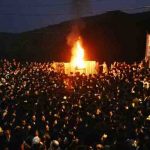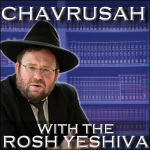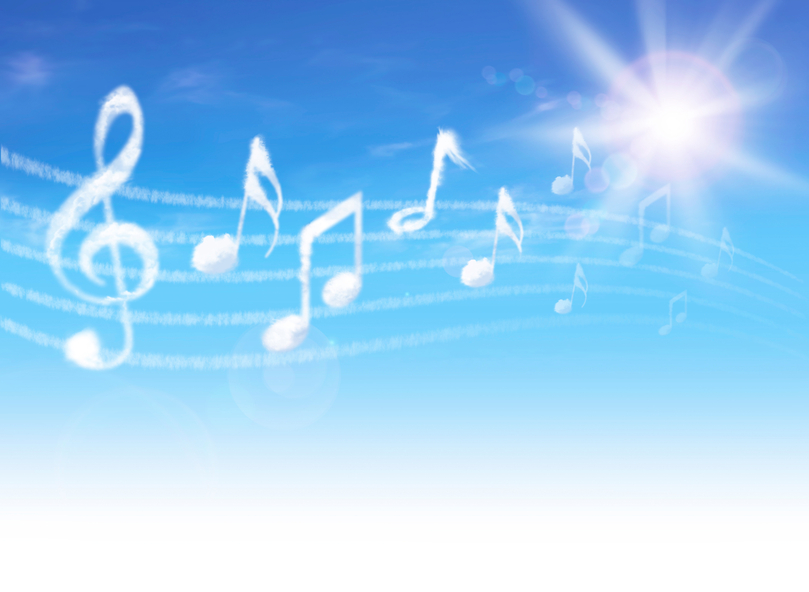Click here to download PDF
Luchos and Jewish eyes?!?
In this week’s Parsha we have the tragedy of the breaking in of the Luchos in response to our sin of the golden calf. It’s one of the reasons we fast on the 17th of Tammuz, however, there is strange flipside to this setback. First of all, Moshe is actually congratulated by Hashem on the breaking of Luchos (see Rashi Devarim 34:12) if it’s a tragedy why is there room for congratulations? What is more mysterious is that is alluded to in the very last words of the Torah (Devarim 34:12) “….all the great awesomeness that Moshe did to the eyes of all Israel” Rashi says “the eyes of all Israel” refers to the breaking of the Luchos as it says in Parshas Eikev (Devarim 9:17) “I broke them to your eyes”. There’s two things that need to be understood: Why does Hashem want the Torah to end off with a reference to this seemingly tragic event of Moshe breaking the Luchos? Why is this event alluded to in the word eyes?
Second Luchos
The Medrash Rabba adds that Moshe was also consoled by Hashem who told him “do not be upset about the Luchos that you broke because the new Luchos that I’m going to give you have Midrash Halacha and Aggadah”. These are aspects of the oral law Torah! Torah was always meant to be both written and oral, what changed? There seems to be a predisposition towards the oral Torah in the second Luchos that there wasn’t in the first, what does it mean?
“Pilpul” – who owns it?
Hashem tells Moshe in this week’s Parsha (34:27): “write for yourself these words….” the Gemara (Nedarim 38A) says “for yourself” teaches us that Hashem gave the “pilpul” – the depth and analysis of Torah to Moshe alone but Moshe had “Tovas Ayin”- generosity and shared it with the Jewish people. How can we imagine a Torah, which belongs to all the Jewish people, without the “pilpul”? “Pilpul” is the Oral Torah, and not the written, why is it alluded to in “Write for yourself..”? This Gemara seems to be in direct contradiction to another Chazal that Rashi brings in the beginning of Parshas Mishpatim that says that Moshe was commanded by Hashem: “don’t think that you will teach it to them two or three times until the coined law will be easy for them to recite but you will not trouble yourself to make them understand the reasons and explanations but rather ‘place before them’ like a set table ready to eat”. How do we reconcile the Gemara with this Chazal?
Opening up perspectives
There is much in Chazal that draw parallels between the shift in level of the Jewish people from the time of the giving of the Torah at Sinai to after the sin of the golden calf and the level of Adam before he ate from the tree of knowledge and afterwards. The Rambam in the Moreh Nevuchim (1:2) explains regarding what says by Adam and Chava (3:7) “…and- their eyes opened, and they knew they were naked”. The Rambam explains that it’s not to say before that they were blind but “the opening of the eyes” refers to realization. It is like you tell someone who explained something to you “you opened my eyes”. However, here it was in a negative way – they had their eyes opened to a fake perspective. This fake person perspective was invisible to them prior to the sin. Prior to the sin they saw the body as something holy that could do Mitzvahs, no different than a pair of filling that’s also made out of flesh. They had their eyes open to a lowly animalistic perspective about the flesh and physicality and that sadly is our perspective on reality at this time.
Torah Light
“For a candle is a Mitzvah and Torah is light” (Mishlei 6:23) and in Aramaic the word for Torah is “Oraysoh” the root being “Or”- light. Chazal tell us that the light that was too good for the wicked to enjoy was hidden where did Hashem hide it? in the Torah! Torah is Divine Light, but it is light on a frequency the lowly flesh eyes can’t see because of the sin of Adam. At the time of the giving of the Torah Hashem enabled us to purify ourselves and get past the sin of Adam and that’s why when Hashem gave the Torah we were able to actually “see the sounds” (see what we explained about this at great length in Even Shesiya on Parshas Yisro “sensory crossover”). Because we had purified our senses from the sin of Adam we were able to see all the depth of Torah that in our current state would need to be explained to us. A sliver of that reality is the light of the Beis HaMikdash where we’re commanded to go three times a year “to see the face of the master the Lord of Yisroel”. This is the “new light” that we pray for to shine on Tziyon. What’s “broken” about the world is that the world does not have the correct perspective on reality of the Creator. Currently, Humanity at best sees the ideas of Torah as concepts or theories, when it is actually reality itself. All the prayers and all the prophecies for the “Perfect future” talk about “light” and “seeing” such as: “may our eyes see your return to Tziyon” “A new light on Tziyon will shine” “show us Hashem the consolation of Tziyon” “may our eyes see your kingdom” and the examples go on and on. The “perfect world” will be the world that sees by “Hashem’s light” and the Torah’s values will be the natural perspective on reality.
First Luchos
The first Luchos were parallel to the level we were on at the time of Maamad Har Sinai and just like our bodies were pure so also the tablets were also a creation of Hashem and equally as Divine as the writing upon them. If we would have received the rest of the Mitzvahs as a continuation of getting those Luchos, even if there would be an oral law the relationship would have different. Imagine a person with extremely Keen eyesight and he is looking at an intricate picture that has hidden images imbedded in it. All you have to do is drop a hint and give him some clues and then he will be able to actually see what you’re talking about. The original plan for Torah was to be “visible sound” meaning to say that much of what we only know through oral explanation would have been visible and we’d be able to see what is discussed with just the most minimal explanation.
The Big Break
After the sin of the golden calf we are naturally blind to the Torah perspective so much so that even after much explanation we only hear it intellectually, but we don’t see it that way. With this we understand a Medrash Rabbah in Parshas Yisro that gives a metaphor for the sin of the golden calf: “A servant poured two glasses for his master and then a calf got loose and made the servant drop one of the glasses and it shattered. He had only one glass left. He presents it to his master and his master says, ‘you broke one you had better be careful with the other’. So also, we poured the two glasses of “Naaseh v’Nishma”– we will do, and we will hear at Sinai. The sin of the golden calf bumped us, and we dropped the glass representing “Naaseh”- we will do as all our Deeds are now fragmented because they are adulterated with the Yetzer HaRa (for an in-depth discussion the see Even Shesiya parshas Vayakheil 5778 “pulling the pieces together”) Hashem warns us: ‘be careful with “Nishma”-hearing. Our remaining relationship with Torah is to hear, we no longer see it as visible light. We don’t have eyes to see and that’s why we pray “enlighten our eyes in your Torah…”
Why did Moshe Chose to Break them?
Hashem was willing to spare to Jewish people and to continue to be his chosen people, which means the nation of the Torah. Therefore, He allowed Moshe to take the Luchos with him down to earth representing that Hashem is keeping his bond with the Jewish people. However, Torah would have been this great light that we’re mostly blind to. We would have understood the basic do’s and don’ts, but we would have been deprived the full infinite depth of it because it’s invisible to us. No amount of explaining would have made a difference to bridge the gap because we’re blind to what is being displayed. When your blind no degree of explanation could ever truly supplement for what’s meant to be visible. After something is shattered you pull the pieces together mainly using your mind and your reasoning of what parts belong together, that’s the power of the oral Torah. We cross-reference, calculate, and pull the pieces together. It’s more the power of the mind and understanding than seeing
Power of the Second Luchos
The second Luchos which were parallel to the level that we sank to where the stone is Earthly Stone representing our Earthly bodies that are not attuned to Divinity and yet we try to bridge it with the Divine ideas represented by the Divine writing. Those Luchos have “medrash” – derivations, tools used to extrapolate the Torah, “Halachos” –ideas that are passed down orally, and “Aggados” – metaphors to guide the mind towards the invisible concepts. The second Luchos set the tone for the manifestation of the same Torah that was originally given except this manifestation of the one and only Torah stresses “Nishma” – hearing and using derivation and dialectic to piece things together as the plain truth is not plainly visible.
With this we could understand why Moshe reminds the Jewish people in parshas Eikev “I broke them to your eyes” meaning to say: “it is because of your eyes that are no longer capable of seeing the Torah in its more visible form that’s why I had to break the Luchos, it was for your own good to give you a Torah you would be able to fully connect to, even on your lowly level. That’s why the final words of the Torah “in the eyes of Israel” refer to the breaking of the Luchos. Moshe broke the Luchos because of our eyes we became blind to the visible manifestation of the one Torah so that same one Torah had to be fragmented because what good is a picture that’s invisible? The pieces can be pulled together with the power of reasoning and derivation and the framework to do that was granted with the second Luchos!
Getting back to the Light
There still remains a difference, it is still a setback that we mourn, and that’s why we yearn to get back to our original level. Not only are we losing our but so is the whole world! If the Jewish people are blind to the light of Torah how much more so the whole world and that’s the “great light” that we are praying for to come speedily in our days!
Before the sin
The context of the Chazal brought in Rashi in parshas Mishpatim is talking before the sin of the golden calf, right after Maamad Har Sinai. At that time when our senses were pure Hashem commands Moshe to be very careful to impart the full depth of the Torah to us, even though we’re not on Moshe’s level of understanding none the less we do have eyes to see it just needs to be explained to us and we will be able to see it! Moshe has to take the pain to make us understand the inner reasonings that he instantly was able to “just see” because we also have eyes to see it, just it will require effort on his part to make us be able to see it.
Moshe is our eyes
However, the context of this week’s Parsha is after the sin of the golden calf and the Jewish people are now blind to the infinite light of Torah. Hashem says: “write for yourself”! Meaning: “Even though much of Torah is oral law, Moshe, you will be able to see it just as easily as you read print”. “Write it for yourself” means for you Moshe who are untainted by the sin of the golden calf you will still be able to see the infinite depth of Torah like “black on white” – the Jewish people can no longer see what you see! Moshe was not satisfied to keep it for himself. Although Hashem exempted him from teaching it to Jewish people because they are blind to that light that Moshe could see, Moshe was not going to give up, he was going to trouble himself to make us understand on our level. Moshe serviced “The Eyes of Israel”. He broke the Luchos because we could no longer see in them what we needed to see and when he got us the second Luchos he tried to connect us to the “light of Torah” anyway he could by no coincidence his generosity is called “Tovas Ayin” (pun intended!) as he is sharing his good perspective with us. Thus, everything he did was for the “Eyes of Israel” to keep us connected, this is what gave us the Zohar generations later….we’ll discuss Lag B’omer time IY”H.
Good Shabbos.











